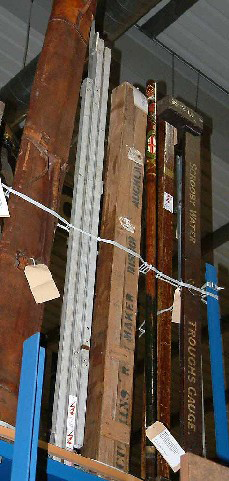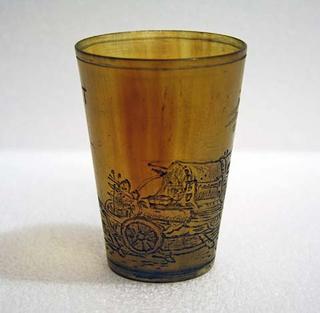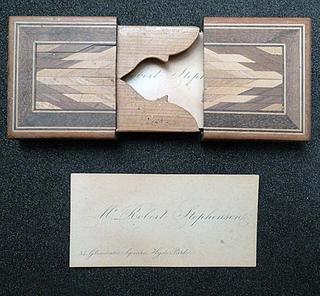
Walking stick, made from telegraph wires which passed over the old Tay Bridge before the Disaster of 1879, made by John McKay a labourer of Tayport Harbour, (broken).
On the night of 28 December 1879, the rail bridge spanning the Firth of Tay, near Dundee in Scotland, collapsed while a passenger train crossed it at approximately 7.15pm. Everyone aboard the train, some 75 people, died.
The scene was set for the disaster when the Board of Trade inspector Major-General Hutchinson inspected the bridge in 1878; Hutchinson had approved the bridge but expressed a desire to know how it would react to a high wind when a train of carriages was passing over it. Within a year, the answer to his question would be tragically answered.
A gale was blowing across the Tay and as the train crossed the bridge the signalmen watched its progress, later reporting a flash of light followed by darkness. Unsure of what had happened, the signalmen tried to go out onto the bridge but were forced back by the wind. Other witnesses had begun to sense that something was wrong. The signalman at the northern end of the bridge wondered why the train had not appeared; witnesses had seen streams of fire falling from the bridge.
Soon the fate of the train became clear. The main spans of the bridge had collapsed, the train and twisted girders found in the Firth by the Tay ferry steamer.
After the disaster, attention turned to the engineer responsible for the bridge’s design, Sir Thomas Bouch. It was discovered that the proportions used in the bracing ties and girders was not sufficient to withstand the pressure a crosswind would exert when a train was passing the bridge. Bouch had also used a design assuming a solid rock base, an assumption that proved to be false. An enquiry found Bouch almost wholly to blame, ruining his reputation as an engineer. Criticism was also made of General Hutchinson, who was condemned for failing to follow up on his queries about the bridge’s ability to withstand a strong crosswind.
The Tay Bridge disaster was a press sensation at the time, with newspaper readers across Britain avidly and anxiously consuming details of the accident as they developed.
Details
- Category:
- Miscellanea & Curiosities
- Object Number:
- 1978-7577
- Materials:
- metal (unknown)
- Measurements:
-
overall: 863.6 mm
- type:
- walking stick
- credit:
- British Rail, Historical Relics




